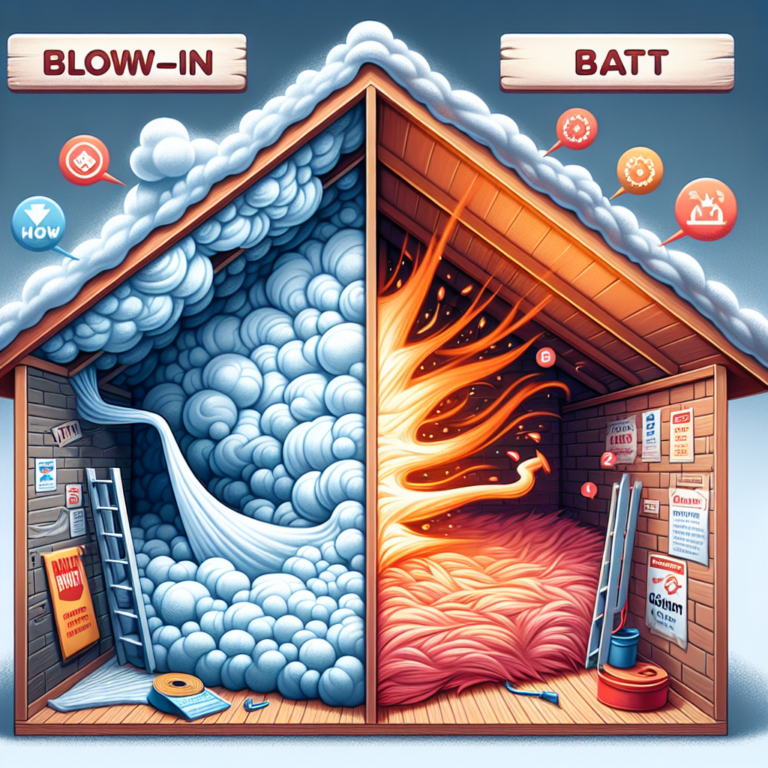Say Goodbye to Cellulose Insulation: The Shocking Average Cost of Blown In Insulation Revealed!
Introduction
If your home still relies on aging cellulose insulation, it’s time for an upgrade. Blown in insulation has become the go-to choice for homeowners seeking superior thermal performance, better air sealing, and lower energy bills. Unlike settled or moisture-damaged cellulose, modern blown in insulation fills every nook and cranny, creating a uniform barrier against heat loss and drafts. In this guide, you’ll discover why removing old cellulose pays off, what drives the cost of blown in insulation removal, and whether to tackle the job yourself or call in the experts.
Benefits of Removing Cellulose Insulation
1. Healthier Indoor Air
Over years, cellulose can harbor mold, mildew and dust mites—especially in humid climates. These contaminants release allergens and spores into your living space. Removing contaminated cellulose dramatically improves air quality, reducing allergy and asthma triggers.
2. Pest Control
Rodents and insects love nesting in loose, paper-based insulation. As they burrow, they compromise both the insulation’s effectiveness and your home’s structure. By stripping out old cellulose, you eliminate a pest magnet and discourage future infestations.
3. Moisture Management
Cellulose absorbs water like a sponge. A leaky roof or pipe can turn it into a damp risk zone, leading to rot and structural damage. Removing wet or water-damaged cellulose stops mold growth at its source and prevents further deterioration.
4. Enhanced Energy Efficiency
Settled cellulose loses loft and R-value over time, forcing HVAC systems to work harder. Fresh blown in insulation restores proper R-values, boosting comfort year-round and cutting heating and cooling costs by as much as 20%.
5. Upgrade Opportunities
Cellulose isn’t always the safest choice in wildfire-prone regions. Once removed, you can switch to fire-resistant fiberglass or high-performance spray foam, tailoring insulation to your home’s unique climate and risk factors.
6. Increased Home Value
Prospective buyers notice dated or damaged insulation during inspections. A freshly insulated attic or wall cavity signals a well-maintained home, helping you command a higher sale price.
Factors Affecting the Average Cost of Blown In Insulation Removal
1. Project Size and Accessibility
The larger the attic or crawlspace, the more labor and disposal costs you’ll incur. Tight corners, steep ceilings, or intricate framing can add complexity—and price—to the job.
2. Condition of Existing Insulation
Clean, loosely packed cellulose is easier to remove than matted, contaminated material. Asbestos-tainted or mold-ridden insulation requires specialized handling, driving up removal costs.
3. Installation Method
Blown in insulation is typically vacuumed out with minimal demolition. But if previous installers glued or stapled cellulose to framing, expect extra time and tools to pry it loose.
4. Regional Labor Rates
Urban centers and high-cost regions naturally command higher hourly rates than rural areas. Seasonal demand also influences pricing—peak summer and fall months often see surges in insulation work.
5. Disposal Fees
Some municipalities levy tipping fees for insulation waste. Additional charges may apply if your local landfill requires asbestos testing or special containment measures.
6. Cleanup and Repairs
Once insulation is gone, you may uncover water damage, pest holes, or failing ductwork. Factoring in drywall repairs, pest remediation, or mold treatment ensures a truly fresh start.
DIY vs Professional Removal: Pros and Cons
DIY Removal
Pros:
– Lower upfront labor costs
– Complete control over schedule and process
– Satisfaction of a self-managed home improvement
Cons:
– Health risks from inhaling dust, mold, or chemical additives
– Potential damage to wiring, ductwork, or roof sheathing
– Time-consuming cleanup and proper disposal logistics
Professional Removal
Pros:
– Certified crews with respirators, HEPA vacuums, and containment systems
– Faster project completion and waste hauling
– Insurance coverage and warranties for unforeseen damages
Cons:
– Higher labor and service fees
– Need to coordinate schedules with a contractor
Common Questions About Insulation Removal
Q1: How long does removal take?
A1: A typical 1,000 sq. ft. attic can be cleared in one day by a professional crew. DIY projects may stretch over a weekend.
Q2: Can I recycle old cellulose?
A2: Most recycling centers can’t accept used insulation due to contamination risks. Expect to pay a small disposal fee.
Q3: Will removing cellulose cause a big mess?
A3: Professionals contain and vacuum debris as they work. DIYers will need heavy tarps, shop vacs, and multiple trash bags.
Conclusion
Removing old cellulose and installing high-quality blown in insulation is one of the smartest investments you can make in your home. Not only does fresh blown in insulation restore R-value and improve comfort, it also tackles air quality, pest control, and moisture challenges all at once. By understanding the factors that influence removal costs—project size, insulation condition, regional labor rates—you can budget accurately and choose the best removal path, DIY or pro. Say goodbye to inefficient cellulose and say hello to a cleaner, greener, more energy-efficient home!












